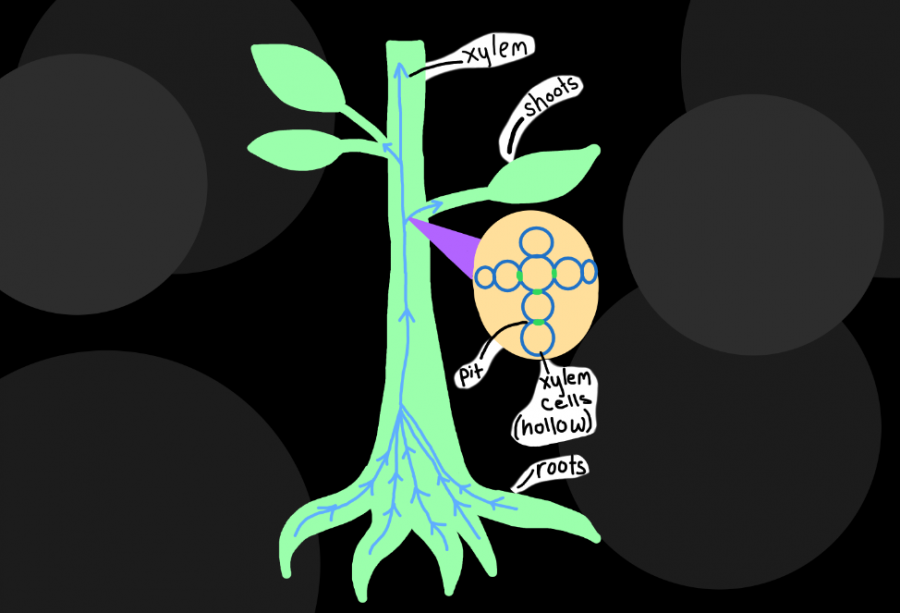Plant protein may help researchers understand drought resilience
MAP20 is located around pits; embolisms can prevent plants from recovering after drought
Hollow cells in the xylem have pits that allow water to move from roots to shoots. MAP20 is a protein that helps regulate pit architecture.
June 29, 2020
By knocking down the concentration of a protein called MAP20 in plant cells, WSU researchers determined cells with less MAP20 are less likely to recover from drought, providing insight into the function of the protein.
The research delves into the vascular system of plants, which is relatively unknown to biologists because vascular cells cannot be cultured outside the plant, said Andrei Smertenko, associate professor in WSU’s Institute of Biological Chemistry.
MAP stands for microtubule-associated protein. Microtubules are part of the cytoskeleton that each cell has — this acts as a scaffold and supports the structure and movement of the cell, Smertenko said.
During cell division, microtubules are responsible for separating the daughter chromatids — the sets of condensed genetic material that will be contained in each new cell, he said.
MAP20 is one of many proteins that cells make to regulate the microtubules during the cell cycle and it is specific to plants, he said.
Using a model plant called Brachypodium, the researchers determined MAP20 is present around areas called pits. These are openings in vascular cells covered by a membrane that water moves through, Smertenko said.
The xylem, one component of a plant’s vascular system, carries water and minerals from a plant’s roots to its shoots, he said. Under a microscope, the xylem looks like millions of tiny tubes, with each tube being a single dead, hollow cell.
Pits deliver water between vascular cells and to the surrounding tissues, Smertenko said.
Plants that grow in water-rich environments have larger pit openings and thinner membranes, which allow more water to flow through, he said.
On the other hand, plants in arid climates have smaller pits with thicker membranes, he said. This is because air pockets can enter the xylem and form an embolism, or blockage, if there is no water available.
“Because plants have millions of those cells, it’s not a problem,” Smertenko said. “But the problem is, air pockets could spread from one cell to another through pits … eventually, this could block all or most of the cells.”
Water is necessary for photosynthesis, so if a plant is unable to transport water because of embolisms in its vascular cells, it would impair the plant’s development, he said.
Plants with a knockdown in MAP20 were less likely to recover after a drought, said Karen Sanguinet, assistant professor in WSU’s Department of Crop and Soil Sciences. The pit membrane was thinner and longer in the knockdown lines than in the wildtype plants.
“We, as humans, like to change our bodies with tattooing, different haircuts, piercings,” Smertenko said. “Plants do exactly the same, except they do it using genes. They can modify their body structures.”
Plants have mechanisms to modify their pit architecture to help them adapt and survive better in different environments, Smertenko said.
“MAP20 appears to be at the very heart of this mechanism,” he said.
There are multiple places in the process of producing proteins that MAP20 could be regulated, Sanguinet said. One future direction for their research is examining how plants control the amount of MAP20 they produce.
“In reality, drought tolerance is a very complex trait,” Smertenko said. “There is no silver bullet … it will most likely take multiple avenues to make plants perform better under drought conditions.”










